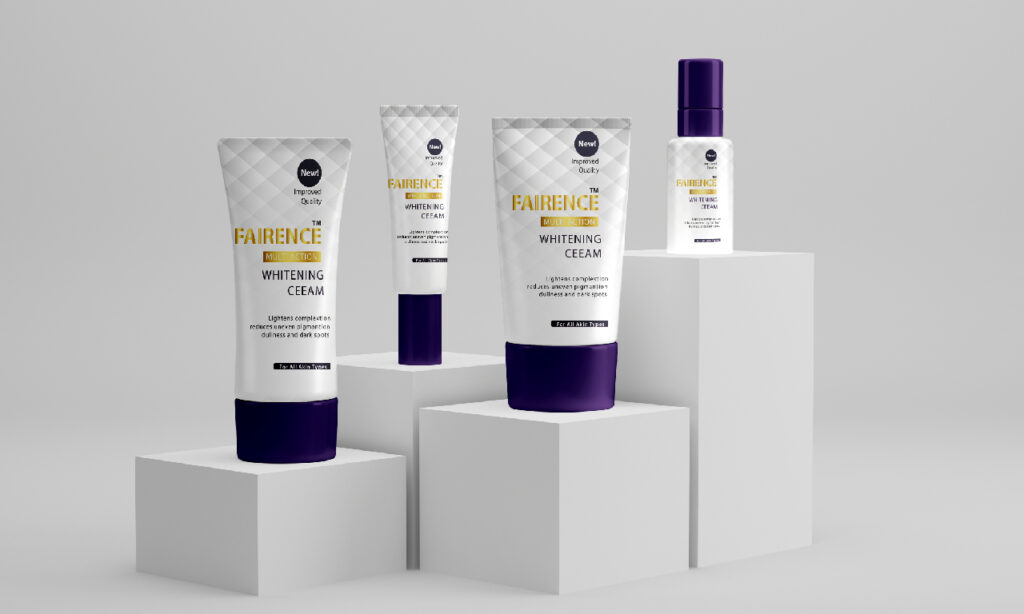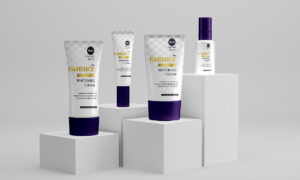Creative Packaging designs does more than just safeguard products; it communicates a company’s identity and values. In markets with fierce competition, it serves as a brand ambassador, influencing consumer perception and fostering loyalty. This manual offers practical guidance on how container design greatly affects brand identification.
Elements of Effective Packaging Design
Brand Identity and Visual Consistency
To build recognition and trust, packaging design should mirror and uphold the brand’s identity. A unified story that appeals to all brand touchpoints is ensured by consistency in logos, fonts, and color schemes. Packaging produces a smooth and cohesive consumer experience by reflecting the brand’s personality and key values.
Graphics and Typography
In order to convey a brand’s message and aesthetic appeal, typography and graphics are essential. Fonts ought to be readable, clear, and consistent with the overall style of the design. The visual impact of packaging is increased by bold and purposeful graphics that reflect the personality of the brand. A neat and eye-catching appearance is also produced by the thoughtful use of whitespace, which avoids congestion and draws attention to important design components.
Color Psychology in Packaging Design
Colors arouse feelings and have a big impact on judgments about what to buy. For instance, red denotes enthusiasm and urgency, whereas green is linked to sustainability. Customer relationships are strengthened by selecting a color scheme that complements the brand’s identity and appeals to the target market. When colors are used carefully, they may create a memorable image, encourage brand loyalty, and make products stand out in crowded markets.
Material Selection: Sustainability and Functionality
Consumers who care about the environment now want environmentally friendly packaging; it is no longer an option. Reusable, recyclable, or biodegradable materials show a brand’s dedication to minimizing its environmental impact while attracting ethical consumers. But usefulness and sustainability must coexist. In order to maintain quality and durability while maintaining environmentally friendly objectives, packaging must sufficiently safeguard goods during handling and transportation.
Steps to Align Packaging Design with Your Brand Identity
1. Recognize Your Viewers
The first step in creating effective packaging is knowing your target market. Examine their values, preferences, and demographics. Luxury consumers can anticipate high-end aesthetics like metallic finishes, while eco-conscious buyers could favor sustainable, simple designs. Customizing your design guarantees that it connects, creates a bond, and establishes your goods as their top pick.
2. Pay Attention to Regularity
Packaging that is consistent builds trust and enhances brand identification. Sync messaging, colors, typography, and logos with the style of your company. For instance, tech brands look good with sleek designs, and natural items look good with organic textures. A consistent design approach guarantees that your items are easily identifiable, resulting in a dependable and unforgettable brand experience.
3. Collaborate with Experts
Skilled designers improve packaging by using their knowledge of production, materials, and trends. They turn your idea into designs that are polished, useful, and eye-catching. They could recommend scalable formats or eco-friendly materials, for instance. Working with professionals guarantees that your packaging stands out in the marketplace and conveys the values of your business.
Partnering with a specialized agency like Packaging Designs can take your branding to the next level. With tailored, high-quality solutions, they create designs that not only capture your brand’s essence but also resonate with your target audience. Whether you’re looking for sustainable packaging or innovative, eye-catching designs, working with professionals ensures your packaging leaves a lasting impression.
4. Use Storytelling
Packaging gains emotional depth and meaning through storytelling. Use words or images to communicate your brand’s beliefs, mission, or journey. Emphasize artisan craftsmanship or sustainable sources, for instance.
How to Leverage Creative Packaging for Small Business Success?
Creating custom packaging doesn’t have to break the bank. Below are detailed, practical tips to help you get started:
Start Small: Begin by investing in low minimum order quantities. This approach reduces upfront costs and prevents overstocking unnecessary inventory.
Choose Eco-Friendly Materials: Opt for sustainable options such as recycled paper or biodegradable plastics. These materials are often cost-effective and resonate well with environmentally conscious consumers, boosting your brand appeal.
Leverage Pre-Made Templates: Utilize readily available customizable templates to design unique packaging. This eliminates the need for costly design software or hiring professional designers.
Opt for Minimalist Designs: Minimalism saves money and enhances aesthetics. A clean, simple design exudes a modern and premium vibe without additional costs.
DIY Finishing Touches: Elevate basic packaging by adding personal touches. Handwritten notes, branded stickers, or simple ribbons can enhance perceived value and delight customers.
Is Creative Packaging Design the Future of Branding?
The traditional function of packaging design as a simple layer of protection for items has evolved in today’s dynamic marketing and branding environment. It has developed into an essential storytelling tool for conveying the personality, values, and identity of a business. As the initial point of contact with consumers, packaging shapes their opinions of a brand and influences their purchase decisions.
Innovative packaging design is becoming essential to branding initiatives as sustainability, customization, and innovation gain prominence. Brands are using packaging as a competitive difference in a crowded market as consumer preferences shift toward meaningful, distinctive experiences. This makes one wonder: could innovative packaging designs be the way of the future for branding?
Trends in Packaging Design for 2025 and Beyond
The packaging industry is undergoing a transformation fueled by shifting consumer behaviors, environmental awareness, and technological advancements. As we move into 2025 and beyond, several emerging trends are defining how brands approach packaging design:
- Sustainable Materials: Increasing eco-consciousness is driving the adoption of biodegradable plastics, recycled paper, and compostable materials. These options not only minimize environmental impact but also resonate with customers seeking sustainable choices.
- Minimalist Aesthetics: Simplicity remains a dominant trend, with clean designs, bold typography, and neutral colors creating sophisticated, modern packaging that appeals to today’s buyers.
- Personalized Packaging: Customized designs, such as limited editions or personalized labels, enhance the customer experience by creating a sense of exclusivity and emotional connection.
- Interactive Packaging: Innovations like Augmented Reality (AR) features provide engaging experiences, enabling consumers to access tutorials, brand stories, or digital content through their smartphones.
- Retro and Nostalgic Themes: Vintage-inspired designs evoke familiarity and emotional appeal, connecting brands with diverse generations in meaningful ways.
These trends reflect a shift towards packaging that prioritizes innovation, sustainability, and customer-centric design, underscoring its vital role in modern branding.
The Role of Technology in Innovative Packaging Solutions
Packaging design is being revolutionized by technology, which allows firms to develop clever, useful, and distinctive solutions. Important developments include:
- Augmented Reality (AR): By providing digital experiences like product details, immersive narrative, or tutorials, AR-enabled packaging increases user engagement.
- Smart Sensors: Especially useful in the food and beverage sectors, integrated sensors keep an eye on temperature, freshness, and product legitimacy.
- 3D printing: This technology opens the door for innovative ideas by making it possible to create complex, personalized package prototypes.
- Eco-Friendly Tech: Brands may more easily embrace sustainable practices thanks to innovations like water-soluble inks and recyclable adhesives.
Packaging’s function in branding has been reinterpreted by e-commerce, making it a crucial touchpoint for interacting with consumers and creating a lasting impression.
E-commerce has redefined packaging’s role in branding, making it a key touchpoint for engaging customers and delivering a memorable experience.
Are Creative Packaging Designs the Key to Successful Branding?
In today’s competitive market, creative packaging design is not just functional—it’s a vital branding tool. Beyond protecting products, packaging communicates a brand’s identity, values, and story, shaping first impressions and fostering emotional connections with consumers.
Modern packaging leverages trends like sustainability, minimalist aesthetics, and personalization to stand out. Eco-friendly materials appeal to conscious consumers, while clean designs and thoughtful typography create a sense of sophistication. Technology further enhances packaging through interactive elements like QR codes and augmented reality, transforming it into a platform for deeper engagement.
Successful packaging aligns with the preferences of its target audience. Through research and collaboration with design experts, brands can create impactful, memorable, and practical solutions. More than just an accessory, creative packaging is now central to building loyalty, setting brands apart, and ensuring long-term success.
FAQs
Why is creative packaging design essential for branding?
Creative packaging design is essential for branding because it acts as a visual representation of the brand’s identity, helping to attract and retain customers. It differentiates a product in competitive markets and fosters emotional connections with consumers.
What role does packaging play in building emotional connections with consumers?
Packaging plays a role in building emotional connections by using design elements like color, typography, and storytelling to evoke specific feelings. For example, eco-friendly packaging fosters trust among environmentally conscious consumers.
Why is storytelling through packaging design important?
Storytelling in packaging is important because it gives consumers a deeper understanding of the brand’s journey and values. Packaging that tells a story—such as highlighting sustainable practices—creates a lasting impression and builds trust.
What are the benefits of integrating technology into packaging design?
Integrating technology, like QR codes or augmented reality, can make packaging interactive and engaging. This approach offers added value, such as product tutorials or exclusive digital content, strengthening customer loyalty.
How does packaging impact online customer reviews?
Packaging impacts online reviews by shaping the customer’s unboxing experience. Well-designed, secure, and aesthetically pleasing packaging often results in positive feedback and social media shares.
How can Packaging Designs help your brand stand out?
Partnering with Packaging Designs provides access to tailored, high-quality packaging solutions that align with your brand’s identity. Their expertise ensures designs that capture attention, resonate with your target audience, and drive sales. Visit Packaging Designs to explore their innovative offerings.


